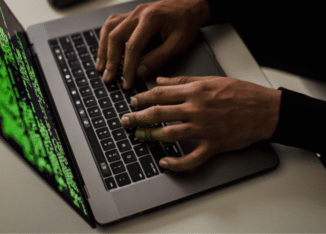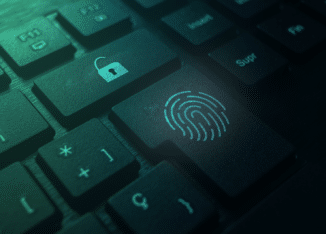
Eleanor Milner
Media Assistant
October 20, 2022
Following the pandemic, remote working has now become commonplace for many organisations and is here to stay for many of us. But how do we minimise the security risks of remote working?
The Great Workplace Shift
Following the pandemic, a growing number of workplaces have started working from home or introduced hybrid working. As a result, data must be stored in different ways to prevent limitations in the way people work. The change in work environments has led to more cloud-based storage of data, and with that comes risks. This shift pushed cyber security to the top of the agenda for the workforce.
Remote working has caused a security breach in 20% of organisations, with 44% of surveyed users saying they were not provided with cyber security training on the risks of remote work.

Phishing
Email phishing attacks are the most common source of data breaches while working from home. This type of attack is often used to steal user data such as login credentials or credit card numbers, could occur when the attacker (masquerading as a trusted entity), dupes the victim into opening an email, instant message or text message. This could result in unauthorised purchases, stealing of funds, stolen data, or identity theft.
How can I prevent phishing attacks?
- Educating staff on ways to spot and respond to possible attacks
- Encouraging good practices such as setting up two-factor authentication to help strengthen password protection and your first line of defence
- Avoiding using weak, predictable or recycled passwords
Ransomware
What is ransomware? This form of malware encrypts a user’s files, and the attacker then demands a ransom from the victim to restore their access. Even if organisations may be in a position wpto y the ransom, ensuring your data is protected is the main priority.
How can I prevent a ransomware attack?
- Ensuring users keep their devices up to date with the latest software updates to help create fewer vulnerabilities
- Installing antivirus software to protect and detect malicious programs when they arrive
- Encouraging good practice such as backing up files frequently and automatically to help reduce possible damage from attacks


Malware
A malware attack is when malicious software executes unauthorised actions on the victim’s system. This often encompasses many specific types of attacks such as ransomware, spyware, command and control, and more.
How can I prevent a malware attack?
- Continuous education to employees on the topic to avoid insider threats
- Security training on best practise such as disallowing downloading of unknown software and educating on how to spot an attack
- Ensuring the network is secure – this could include using firewalls, IPS, IDS or VPNs
Futureproof your WFH team
Working remotely can cause your organisation’s IT security to become increasingly compromised. However, many security risks can be easily reduced through the importance of education. Ensuring you have the conversation around cyber security regardless of the work environment is an important step.
Learn more about cyber security and the range of solutions available to help strengthen yours in the pdf below.
LEARN MORE



